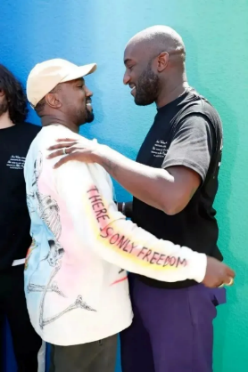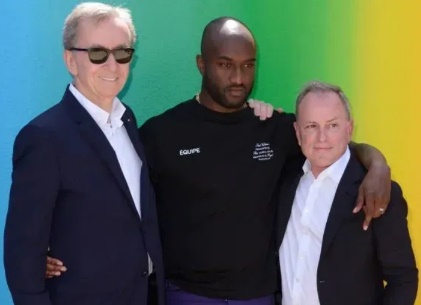1. Introduction
Off-White, originating from the United States, has blurred the lines between luxury fashion and street culture, garnering widespread attention in the fashion and trend circles upon its launch. In 2019, the global fashion search platform Lyst released its report for the third quarter on top global fashion brands, with Off-White surpassing luxury fashion houses such as Gucci, Balenciaga, Valentino, and Fendi to claim the top spot [1]. The ability of a streetwear brand to surpass numerous high-end fashion brands demonstrates Off-White's robust design and marketing prowess. Against the backdrop of the current trend for nationalistic fashion, studying Off-White's brand marketing strategy can contribute to the development of clothing brands in China.
2. Overview of the Off-White Brand
2.1. Off-White Brand Concept
The name Off-White implies a fresh start from scratch, symbolizing a blank slate. Positioned between high fashion and streetwear, Off-White's headquarters and creative studio are located in Milan. Virgil aims for products to be manufactured in Italy, drawing from its history and craftsmanship while providing a global perspective on design trends. This amalgamation integrates American aesthetics with the finest quality and contemporary styles, creating streetwear with a sense of high-fashion aesthetics and texture.
2.2. Marketing Status of Off-White Brand
Established in 2013, Off-White's brand sales surged from 2.6 million euros in 2014 to 450 million euros in 2020, achieving a staggering 173-fold increase in sales over a short span of six years [2]. According to Lyst's report on top global fashion brands for the third quarter of 2019, Off-White secured the top spot, outperforming numerous high-end fashion brands. It continued to dominate for three consecutive quarters, with three of the top 20 fashion products being attributed to Off-White [2]. Achieving both fame and success, Off-White was welcomed into the realm of LVMH. On July 20, 2021, the luxury conglomerate LVMH completed the acquisition of Off-White: LVMH acquired 60% of Off-White's shares, while the brand's founder, Virgil Abloh, retained the remaining 40%, continuing his role as the creative director of Off-White and the artistic director of Louis Vuitton's menswear line [3]. With its successful integration into the largest luxury goods conglomerate, LVMH, Off-White has gradually entered the realm of high fashion, broadening its audience and moving towards luxury and high-end markets.
3. Research and Analysis of Off-White's Marketing Strategy
3.1. Relationship Marketing
With the continuous development of the service industry and the gradual elevation of customer status, relationship marketing has emerged. The concept of relationship marketing first appeared in the early 1980s in the Nordic region, where marketing activities were integrated into the entire socio-economic system, considering the enterprise as a subsystem within the larger socio-economic system. Marketing activities involve positive interactions among various factors surrounding the brand, including insiders, social elites, celebrities, consumers, suppliers, distributors, competing brands, banking and government institutions, and other members of the public [4]. The key to successful marketing lies in establishing a good relationship with these individuals or organizations, with consumers at the core of relationship marketing. Gaining the trust of consumers is the initial step, followed by gradually transitioning to consumer loyalty, thereby establishing a long-term, stable, and mutually beneficial partnership. Effective communication is essential in building a good relationship, strengthening interaction between the brand and consumers, and bridging the gap between the two. Consequently, the commercial relationship between the company and consumers transforms into a friendly relationship characterized by positive communication and interaction [5].
Off-White effectively utilizes the concept of "relationship marketing." In 2002, Virgil entered the fashion circle under the guidance of the renowned rapper Kanye West. Due to their rapport and similar aesthetics, Kanye promoted him from a peripheral product designer to a regular member of his fashion art creative team, DONDA, leading to a close friendship between the two. Leveraging Kanye West's powerful influence, Off-White's clothing gained exposure through numerous celebrities and stars. Renowned Chinese celebrity Lu Han, donning an Off-White herringbone-print jacket, even turned a mailbox on the Bund in Shanghai into a popular selfie spot, with crowds lining up until 4 a.m. for a photo with the mailbox, demonstrating the formidable influence of celebrities and the terrifying fan effect. Off-White garnered significant exposure through the "celebrity effect."
Virgil's strong "circle of celebrity friends" can be considered the key to Off-White's rapid rise to prominence. By networking upwards, Virgil established connections with Kanye West (see Figure 1) and also cultivated relationships with Bernard Arnault, CEO of the LVMH Group, and Michael Burke, CEO of the Louis Vuitton brand (see Figure 2). In March 2018, Virgil Abloh was appointed the artistic director of the LV menswear series, becoming the first black designer to helm LV's creative design, making significant contributions to the rejuvenation of LV menswear and enhancing its popularity among the younger generation. On one hand, LV required Virgil, a fashion icon, to attract the attention of the Generation Z youth, while on the other hand, Virgil sought to expand his own influence and that of his brand through LV, with Off-White also thriving under the guidance of the LVMH Group.
In addition to establishing good relationships with insiders and celebrities, Virgil Abloh also pays special attention to fostering good relationships with consumers. In the era of the internet, consumers now have more sources of information than ever before. Virgil believes that brands need to establish a new mode of communication with customers gradually. With the assistance of social media platforms such as Twitter and Instagram, the possibility of initiating new dialogues with the audience has emerged. He actively connects with young fashion icons through Instagram, offering global online street culture courses to impart his design thinking and business acumen to the younger generation. Furthermore, he engages in offline events to interact with street culture enthusiasts and fashionistas, fostering a strong sense of affinity with consumers, in stark contrast to the distant and inaccessible image of typical luxury brand presidents. Virgil Abloh's approachability has earned Off-White a considerable number of supporters.
Investment guru Warren Buffett once said, "If you can learn communication skills, including both interpersonal and written communication, you can at least increase your value by 50%." Communication skills are crucial in one's career, helping to establish positive and strong relationships with others. Kanye West once stated, "Virgil is the smartest, most efficient, and most creative person I've ever seen. He really understands how to market and build a network." Virgil, through his affable nature, has established good relationships with insiders, celebrities, and fashion enthusiasts at various levels, expanding Off-White's visibility, likability, and influence through "relationship marketing," thereby creating a friendly and exceptional brand image for consumers.
|
|
Figure1: Virgil abloh and kanye west | Figure 2: Virgil abloh, Bernard Arnault and Michael Burke |
3.2. Co-branding Marketing
Brand co-branding refers to a commercial collaborative effort where a brand collaborates with other brands or social celebrities to produce a certain type of product that embodies the characteristics of all parties involved. Co-branding leverages the advantages of each partner to create a competitive edge that a single brand may not possess. Co-branding takes various forms, including alliances between brands, as well as collaborations between brands and individuals, such as social celebrities, artists, and independent designers [6]. Co-branding initiatives generally involve a two-party collaboration, although there are also a significant number of three-party or multi-party collaborations. Co-branding attracts audience attention through novelty and topicality, creating new marketing points and leveraging the influence of all parties to enhance the commercial value of the brand and related products. Ultimately, this approach facilitates the complementary advantages of brands and the mutual penetration of brand intellectual properties, leading to an increase in the visibility and influence of all parties involved.
Although Off-White is a relatively young brand with only a decade of history, it is gradually approaching top-tier luxury brands in terms of international reputation and individual product prices. Off-White owes much of its success to its "co-branding marketing" strategy. By collaborating with other brands or celebrities, Off-White has gained a growing reputation and audience attention, effectively enhancing its visibility.
One of the key milestones for Off-White was its collaboration with Nike in 2017, resulting in the "the ten" series. Virgil Abloh employed his unique "deconstructed" and "perspective" designs to recreate ten classic Nike shoe models. In terms of design language, each pair of shoes incorporates Off-White's signature elements, such as unique security tags and double quotation marks, as well as orange labels and instructional text patterns, forming a distinctive style [8] (see Figure 3). "The Ten" shoe series once dominated the annual list of the most popular sneakers, selling out rapidly upon release, with resale market appreciation ranging from 5 to 10 times, leading to what the industry terms the "Virgil Abloh effect." Off-White's collaboration with Nike is hailed as one of the most classic and successful collaborations in the world. Off-White, the rising star in the fashion circle, and Nike, the world's top sports brand, leveraged this strong partnership not only to significantly enhance Off-White's visibility and secure its position in the young consumer market but also to directly propel Virgil into the position of LV's menswear creative director.
Additionally, Off-White has also collaborated with brands such as IKEA, Vans, Kith, Jimmy Choo, Umbro, and others to release co-branded products, increasing the topicality and brand audience. Furthermore, some of these collaborative collections cater to the mass market with relatively affordable prices, allowing the middle- and lower-income groups to purchase Off-White products, further expanding Off-White's visibility and influence in the mainstream consumer market [2].
It is evident that co-branding marketing is an important way for brands to expand their audience and visibility. The collaboration between brands not only incorporates the design characteristics of both parties but, more importantly, achieves a market marketing effect that exceeds the sum of its parts, creating a strong market presence and appeal. This approach brings more benefits and a broader audience to both brands. Through frequent co-branding initiatives, Off-White has generated continuous topics and traffic, expanded the influence and visibility of its brand, brought in audiences from different fields, and achieved significant success.
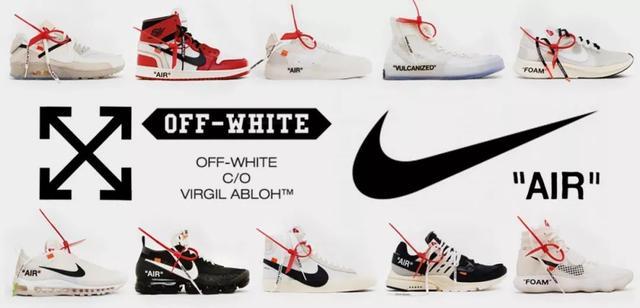
Figure 3: Offwhite co-branded Nike: the Ten series
3.3. Scarcity Marketing
Following the example of the American streetwear brand Supreme, Off-White adopts a "drop" model for its product releases to ensure that products are almost always sold out. In the context of fashion retail, "drop" signifies scarcity marketing [8]. Scarcity marketing refers to the deliberate reduction of the production of excellent products, using limited releases to control the supply-demand relationship. This strategy creates a phenomenon of supply scarcity to attract consumer attention, increase popularity, elevate product image, and maintain high sales prices and profits, ensuring the sustainability of product sales. As a marketing tool, "scarcity marketing" has achieved tremendous success in various fields [9].
Off-White often creates a sense of scarcity for its brand by using limited releases, resulting in a "scarcity breeds value" phenomenon that fully caters to consumers' desire for scarcity and individuality [9]. The brand's relatively high prices demonstrate its high-end positioning, and through a successful "scarcity marketing" strategy, Off-White gradually moves toward the realm of high fashion. "High prices, limited quantities, and celebrity endorsements" are the keys to Off-White's success. The analysis of the marketing strategy based on the above is summarized in Figure 4.
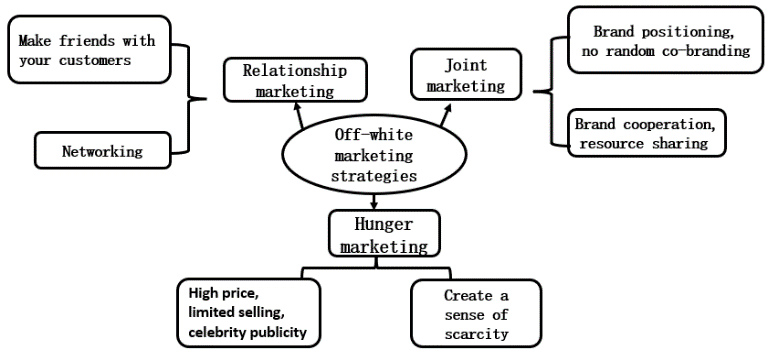
Figure 4: Off-white marketing strategy analysis (author's summary)
4. Insights from Off-White's Marketing Strategies
Through research and analysis of the marketing strategies of the Off-White brand and an investigation into the marketing effects of Off-White, the reasons for Off-White's rapid rise to fame have been analyzed. Reflecting on the development process of the Off-White brand and its marketing strategies, the following insights and reflections have been derived.
4.1. Establishing a Friendship with Consumers
View consumers as friends, not just as customers. Listen to consumers' true needs like a friend, and then make appropriate adjustments to your brand's products and services based on valuable feedback from consumers, thereby better serving consumers. Instead of pursuing maximum profit from each transaction, aim for maximizing mutual benefits and eventually establish a situation of mutual benefit and mutual gain, thus building a long-term and stable relationship of mutual trust and mutual benefit with customers [4].
Furthermore, enhancing interactive experiences with consumers can enhance their sense of interaction, experience, and participation, thereby stimulating consumers' favorable impressions of the brand. Encourage consumers to participate in brand communication, offering various new experiences and benefits to consumers through interactive communication. When satisfied, consumers will share their interactive experiences with their friends and family, generating spontaneous word-of-mouth effects that invisibly enhance the brand's influence [6].
4.2. Networking Upward
Virgil Abloh's success is closely related to one person: Kanye West. Before meeting Kanye, Virgil was just a university student studying architecture. It was only after forming a relationship with Kanye that he was able to help Kanye with numerous designs, gaining access to numerous resources in the fashion and streetwear circles and ultimately enabling the meteoric rise of Off-White.
There are many talented designers, but not everyone has the opportunity to showcase their designs to the world. Therefore, in addition to design capabilities, social skills are particularly important, especially the ability to network upward, seeking opportunities to meet industry bigwigs in the fashion and streetwear circles and striving to gain their recognition and trust. Obtaining the approval of key figures in the industry is crucial during the process of entering the circle, as it can accelerate the development of your brand [11].
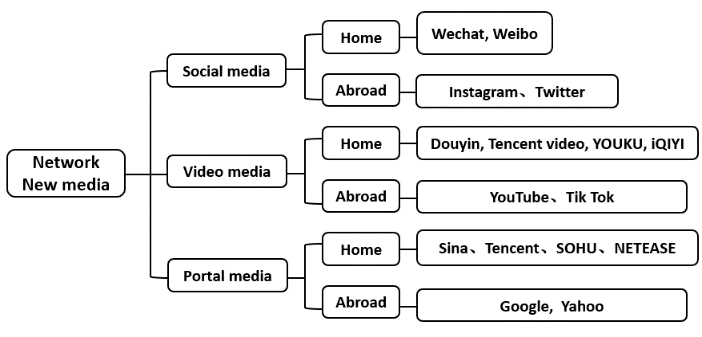
Figure 5: Organized new online media platforms (author's summary)
4.3. Broadening Brand Audience through Collaboration
Collaboration is a brand promotion strategy aimed at generating substantial profits through positive brand communication. Co-branding allows brands to leverage each other's resources to boost popularity, attracting consumers from different categories through the combined efforts of both parties, thus maximizing brand influence. However, collaboration is not a random process, as any arbitrary co-branding not only fails to achieve the 1+1>2 effect but may also result in losses, adversely affecting the brand [12].
When engaging in co-branding, brands should choose collaborations with target user groups that have certain connections. If the target positioning of both brands differs significantly, and their brand concepts and spirits are vastly different, such collaborations are unlikely to leave a good impression on consumers. Looking at Off-White's history of collaborations, the brand has consistently chosen to collaborate with brands that have some relevance to its own brand. The collaboration with the world's leading sportswear brand Nike propelled Off-White to the forefront. The collaboration with luxury footwear brand Jimmy Choo garnered more attention from female users. The collaboration with Ikea expanded Off-White's influence in the home furnishings industry. In addition to clothing, Off-White also ventures into the home decor market. The collaboration with Ikea not only brought Off-White significant traffic but also introduced more people to Off-White's range of home decor products, undoubtedly expanding the brand's territory. Off-White's co-branding activities serve to widen its brand's audience, thereby achieving a greater impact.
4.4. Expanding Brand Influence through New Media Networking
Off-White's founder Virgil frequently interacts with brand users and fashion enthusiasts through the Instagram platform, a practice he has maintained even after achieving fame. Off-White uses Instagram to update its dynamics, release the latest products, showcase runway events, and promote brand culture and philosophy. Fans can also purchase Off-White products through the Instagram platform. Virgil has expanded Off-White's brand influence through the Instagram network, attracting more fans and purchasing power for the brand.
In this era of the Internet, almost everyone owns a smartphone. The prevalence of domestic social media platforms such as WeChat, Weibo, Douyin, and Xiaohongshu, as well as foreign platforms like Instagram, Facebook, Twitter, WhatsApp, YouTube, and TikTok, has expanded people's social networks beyond just friends and family to the entire online world [13]. These popular new media platforms have become part of people's daily lives. The daily activity on the Chinese app Douyin alone reaches 600-700 million, a level of traffic that is almost impossible to achieve through physical stores. Therefore, using social media for marketing and promotion of brand philosophy and products is a significant advantage. Leveraging these online media platforms to strengthen brand promotion, place brand advertisements, and collaborate with celebrities, internet personalities, fashion bloggers, models, and key opinion leaders (KOLs) who align with the brand's philosophy, all contribute to brand promotion and showcase the brand's diverse charm. The summary and analysis of new media are presented in Figure 5.
5. Conclusion
This study initially provides an overview of the fashion brand Off-White, focusing on analyzing its marketing strategies. These strategies are summarized into three main points: "relationship marketing," "co-branding," and "scarcity marketing," which are the key factors contributing to the rapid success of the Off-White brand. Additionally, the study derives four insights from Off-White's marketing strategies, namely establishing a friendship with consumers, networking upwards, broadening the brand's audience through collaboration, and leveraging social media to expand brand influence. It is hoped that this paper can provide some reference and assistance to domestic clothing brands or practitioners. Currently, there is a general scarcity of literature on marketing strategies for luxury clothing brands or streetwear brands on academic platforms, indicating a significant research gap in this field that awaits further exploration by scholars.
References
[1]. Lyst Index. The Hottest Brands and Products in the Fashion Industry Q4 2019 [EB/OL]. (2019) [2019]. https://www.lyst.co.uk/data/the-lyst-index/q419/.
[2]. LADYMAX.cn. Disruptor Off-White [EB/OL]. (2018-12-6)[2018-12-6]. http://news.ladymax.cn/201812/06-34103.html.
[3]. FINANCIAL TIMES. LVMH acquires majority stake in Virgil Abloh’s Off-White label [EB/OL].(2021-7-20)[2021-7-20]. https://www.ft.com/content/12b28feb-a695-4109-aa7c-ada06011f011.
[4]. ZUO Ren-shu. Relationship Marketing: the theoretical basis of service marketing [J]. Journal of Sichuan University (Social Science Edition), 2004(4):19-23.
[5]. SONG Yangqiuge. A study of clothing brand marketing strategy in the new media era taking Uniqlo as an example [D]. Suzhou: Soochow University, 2017.
[6]. Bai Yanhui, Wang Hongfu. Marketing strategy analysis of clothing brand co-branding [J]. Journal of Clothing Research, 2019, 4(4): 366-371.
[7]. YAN Yan. Interpretation of Co-branding Design based on semiotics [J]. Packaging Engineering, 2020, 41(2): 80-84.
[8]. Sina Fashion. What is the "drop" model, and why do fashion brands love it? [EB/OL]. (2018-10-22)[2018-10-22] http://fashion.sina.com.cn/s/fo/2018-10-22/1101/doc-ihmuuiyv6822333.shtml.
[9]. YAN Zhanghua, Liu Lei, Bai Shizhen, et al. Study on supply chain coordination based on revenue-sharing contracts in the "Hunger marketing" model [J]. Management Review, 2017, 29(2): 69-78.
[10]. Yao Jia. Fashion brand collaboration marketing research [D]. Changchun: Jilin University, 2018.
[11]. 36Kr. Playing with shoelaces, printing on shoes, why is OFF-WHITE so popular? [EB/OL]. https://36kr.com/p/1510130149281544.
[12]. DU Juan. Case study of cross-border marketing strategy for apparel brands [J]. Art and Design Research, 2013(3): 31-34.
[13]. CHEN Caihong. Research on marketing strategy of LiNing brand sportswear [D]. Jilin University 2021.
Cite this article
Wang,S. (2024). A Study of the Marketing Strategy of the High-End Streetwear Brand Off-White and Its Implications. Advances in Economics, Management and Political Sciences,70,177-183.
Data availability
The datasets used and/or analyzed during the current study will be available from the authors upon reasonable request.
Disclaimer/Publisher's Note
The statements, opinions and data contained in all publications are solely those of the individual author(s) and contributor(s) and not of EWA Publishing and/or the editor(s). EWA Publishing and/or the editor(s) disclaim responsibility for any injury to people or property resulting from any ideas, methods, instructions or products referred to in the content.
About volume
Volume title: Proceedings of the 2nd International Conference on Financial Technology and Business Analysis
© 2024 by the author(s). Licensee EWA Publishing, Oxford, UK. This article is an open access article distributed under the terms and
conditions of the Creative Commons Attribution (CC BY) license. Authors who
publish this series agree to the following terms:
1. Authors retain copyright and grant the series right of first publication with the work simultaneously licensed under a Creative Commons
Attribution License that allows others to share the work with an acknowledgment of the work's authorship and initial publication in this
series.
2. Authors are able to enter into separate, additional contractual arrangements for the non-exclusive distribution of the series's published
version of the work (e.g., post it to an institutional repository or publish it in a book), with an acknowledgment of its initial
publication in this series.
3. Authors are permitted and encouraged to post their work online (e.g., in institutional repositories or on their website) prior to and
during the submission process, as it can lead to productive exchanges, as well as earlier and greater citation of published work (See
Open access policy for details).
References
[1]. Lyst Index. The Hottest Brands and Products in the Fashion Industry Q4 2019 [EB/OL]. (2019) [2019]. https://www.lyst.co.uk/data/the-lyst-index/q419/.
[2]. LADYMAX.cn. Disruptor Off-White [EB/OL]. (2018-12-6)[2018-12-6]. http://news.ladymax.cn/201812/06-34103.html.
[3]. FINANCIAL TIMES. LVMH acquires majority stake in Virgil Abloh’s Off-White label [EB/OL].(2021-7-20)[2021-7-20]. https://www.ft.com/content/12b28feb-a695-4109-aa7c-ada06011f011.
[4]. ZUO Ren-shu. Relationship Marketing: the theoretical basis of service marketing [J]. Journal of Sichuan University (Social Science Edition), 2004(4):19-23.
[5]. SONG Yangqiuge. A study of clothing brand marketing strategy in the new media era taking Uniqlo as an example [D]. Suzhou: Soochow University, 2017.
[6]. Bai Yanhui, Wang Hongfu. Marketing strategy analysis of clothing brand co-branding [J]. Journal of Clothing Research, 2019, 4(4): 366-371.
[7]. YAN Yan. Interpretation of Co-branding Design based on semiotics [J]. Packaging Engineering, 2020, 41(2): 80-84.
[8]. Sina Fashion. What is the "drop" model, and why do fashion brands love it? [EB/OL]. (2018-10-22)[2018-10-22] http://fashion.sina.com.cn/s/fo/2018-10-22/1101/doc-ihmuuiyv6822333.shtml.
[9]. YAN Zhanghua, Liu Lei, Bai Shizhen, et al. Study on supply chain coordination based on revenue-sharing contracts in the "Hunger marketing" model [J]. Management Review, 2017, 29(2): 69-78.
[10]. Yao Jia. Fashion brand collaboration marketing research [D]. Changchun: Jilin University, 2018.
[11]. 36Kr. Playing with shoelaces, printing on shoes, why is OFF-WHITE so popular? [EB/OL]. https://36kr.com/p/1510130149281544.
[12]. DU Juan. Case study of cross-border marketing strategy for apparel brands [J]. Art and Design Research, 2013(3): 31-34.
[13]. CHEN Caihong. Research on marketing strategy of LiNing brand sportswear [D]. Jilin University 2021.










